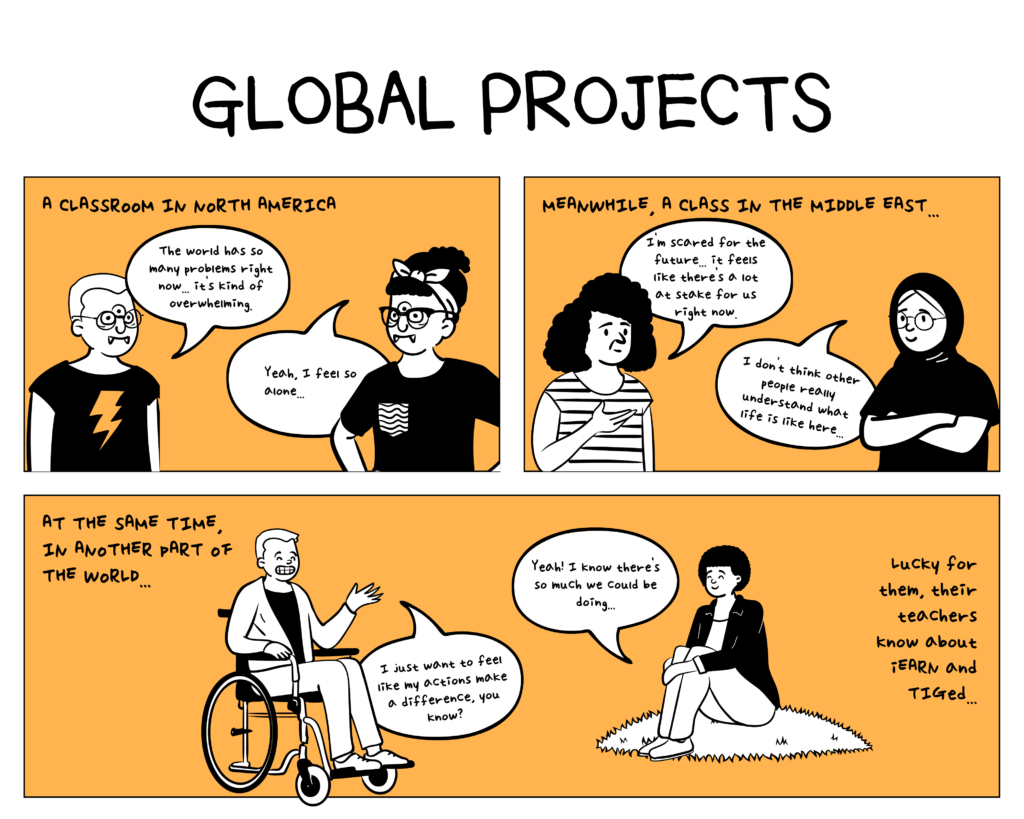
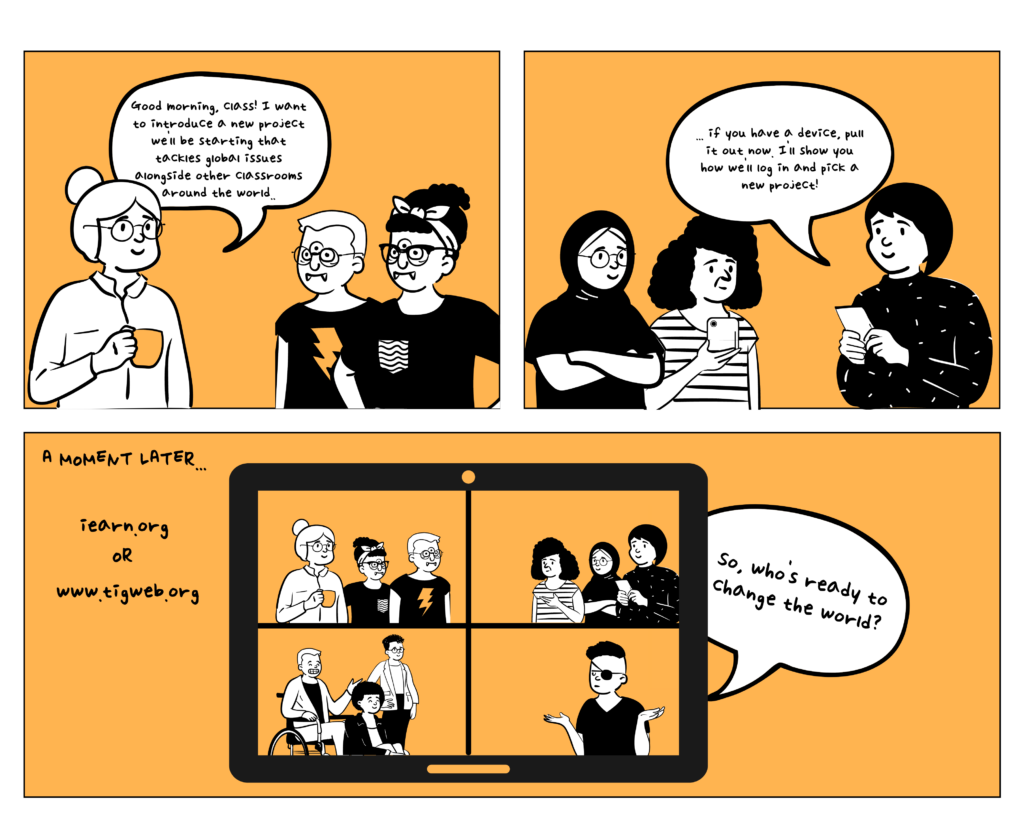
References:
TakingITGlobal for Educators: https://www.tigweb.org/tiged/
iEARN Collaboration Centre: https://iearn.org/collaboration
Place-based teaching and learning in SD61


References:
TakingITGlobal for Educators: https://www.tigweb.org/tiged/
iEARN Collaboration Centre: https://iearn.org/collaboration
The Horizon Report: K–12 Edition from New Media Consortium is something to keep visible for LLC goal development. With a focus on 21st Century tech implementation and leadership development, this report offers insight and applicable suggestions for LLC and VLLC growth that branches out to whole-school transformation. The latest report is 2017, which leaves me wondering when the next will be available.
I [admittedly] skimmed the contents of the 55-page report, with a strong focus on the trends, significant challenges, and timeline for adoption. Although I do not yet have my own LLC to root these goals and reflections, I focussed on a blend of the two Elementary-level school libraries that I have spent most of my time as a TTOC in.
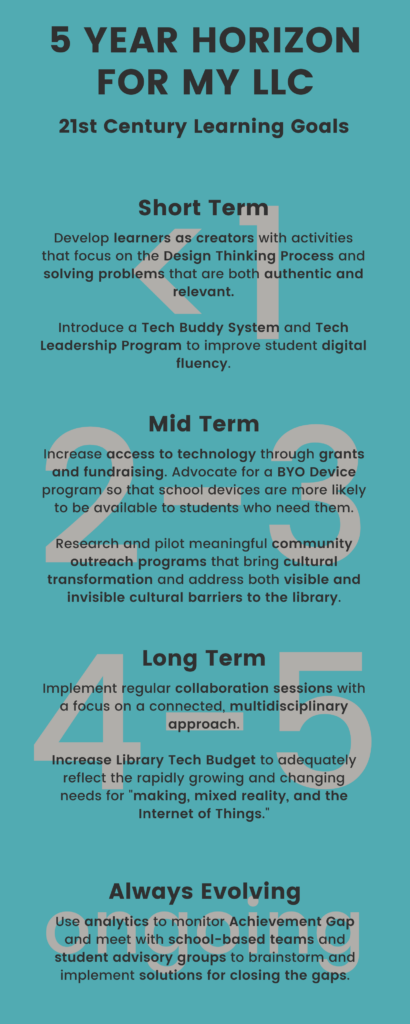
The Executive Summary (pg. 4) highlights 10 Big Picture ideas that underpin the 18 topics covered in the report: 6 key trends, 6 six significant challenges, and six developments in educational technology. I have based my LLC goals on these topics.
I have organized these based on my understanding of leveraging change in a complex system (thanks to Donella Meadows’ resources, referenced below). It is in harnessing and changing the “mindset or paradigm out of which the system — its goals, power structure, rules, its culture — arises” that we truly see transformational change happen. My longterm goal is always to close the Achievement Gap (p.34) and shift towards collaborative, hands-on, multidisciplinary learning.
Question for you: Which of these goals is most relevant to your LLC and how would you begin pursuing it? Are there any resources you would use to guide your implementation?
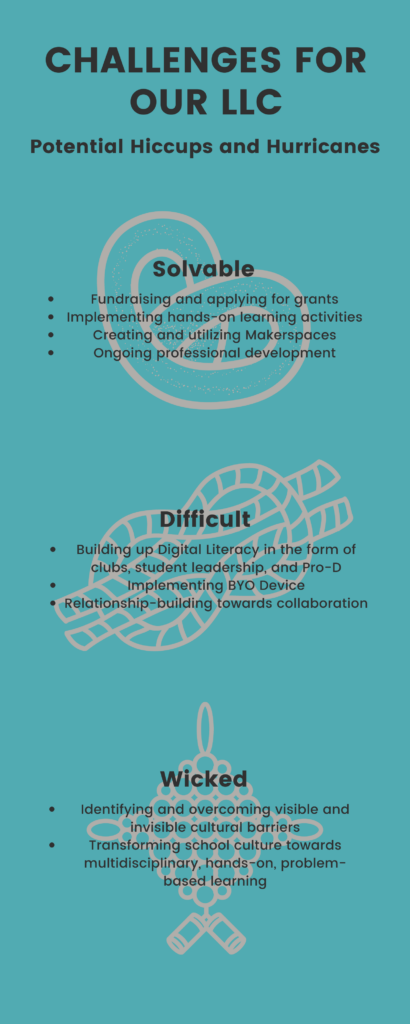
From Solvable to Wicked, what challenges might arise as we work along the 5-year LLC goals?
Some of these goals are immediately implementable. They do not present radical challenges to the mindsets of traditional thinkers, they follow pre-set educational norms, and are in-line with existing district goals. If they meet these criteria, they fall under Solvable.
The Difficult challenges refer to goals that might require a longer time-commitment to achieve and most likely involve challenging existing power structures. While still attainable, these challenges may require strategic conversations, a long-term focus, shifting mindsets, and a focus on re-education.
The final set of challenges are termed Wicked because they require digging deep into the Systems of Public Education here in BC. These challenges require an awareness of the roots of our policies, and how those roots are the very things that prevent social justice. Facing these challenges requires an Intersectional Analysis, comfort in discomfort, and a willingness to engage in introspective growth. It takes identity work, emotional awareness, cultural humility, and bravery. It’s wicked, but it’s worth it.
Question for you: Which of these presents the greatest challenge to you? How would you go about meeting this challenge, and what resources/tools/skills would you need to hone and harness along the way?
References:
Freeman, A., Adams Becker, S., Cummins, M., Davis, A., and Hall Giesinger, C. (2017). NMC/CoSN Horizon Report: 2017 K–12 Edition. Austin, Texas: The New Media Consortium.
Meadows, D. (2012, April 5). Leverage Points: Places to Intervene in a System. The Academy for Systems Change. https://donellameadows.org/archives/leverage-points-places-to-intervene-in-a-system/.
Strauss, V. (2019, April 18). What the modern world has forgotten about children and learning. The Washington Post. https://www.washingtonpost.com/news/answer-sheet/wp/2016/08/19/what-the-modern-world-has-forgotten-about-children-and-learning/.

Questions for you:
Get the link to this Canva Infographic here. You may use this as a template and edit to suit your personal learning goals!
Ok, let’s take a look at some of the leading PLN community platforms:
So, it would seem as if ISTE has the most dedicated PLN platform. I wish I could dig through the discussion boards before having to pay the fee, so that I could see what topics have been covered. At the end of the day, I’m honestly most likely to start (and join) a focused PLN through Facebook, Instagram, Twitter, and Pinterest. That’s where I’m most active, where I’m comfortable, and where I know I can find the specific topics I’m looking for (for free) without barriers to access.
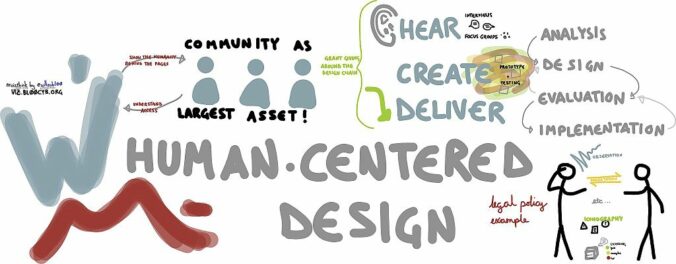
In minute 3:37 of Sandra Averill’s overview of the BC K-9 ADST curriculum, I hear something that clicks into place for me:
“My concern is that we will take a traditional approach to this non-traditional curriculum.” (3:37, Averill)
Unlike traditional models of teaching, ADST is not intended to be a unit that we begin and complete. Instead, it is a model of thinking and learning that is woven throughout the curricula. The moment we apply constraints to the ADST process, we are limiting and moving away from the purpose of exploration, individualized learning, collaborative design, and growth mindset.
Sandra describes the ideal ADST process as “meeting the same learning outcomes, but arriving there through different materials.” (7:40, Averill)
Immersion, problem-solving, creating, big-picture thinking, uncharted territory, expeditionary learning, inquiry, context, life-improving, inspirational, stages of a project, skills for life… these key words help to define how ADST can transform the idea of what it means to be a teacher and a student in the 21st century. It starts with a problem and moves almost immediately into several questions to help define and meet that problem.
“I feel that schools shouldn’t just be about learning about problems, I think they should be about solving them. Because, if you aren’t learning about solving problems, then what will you do when you’re out of school?” – Liva Pierce, King Middle School, Maine School Engages Kids With Problem-Solving Challenges
As students move on to future grades, they may forget the particulars of the content they have been taught. That is to-be-expected. We retain what is relevant, interesting, and useful to us. What does not go away are the life skills: communicating with others, defining and tackling a problem, approaching an unknown with curiosity and wonder.
Imagine the products of an educational system that focussed on life skills over content, relevancy over ease-of-delivery, inspiring and empowering students to follow their passions over the more traditional “sage-on-the-stage” method of delivering content.
I’m curious, what is preventing more teachers and schools from adopting the problem-solving approach to learning? How can those barriers be addressed by the school librarian?
References:
Applied Design Skills and Technologies K-9, published by Sandra Averill through Issuu.com on Oct 22, 2017
ADST Design Thinking K-9, uploaded by Sandra Averill through Vimeo.com on March 24, 2020
Maine School Engages Kids With Problem-Solving Challenges, a PBS NewsHour piece on Youtube, uploaded on May 6, 2013
© 2025 Learning in Place
Theme by Anders Noren — Up ↑
Recent Comments